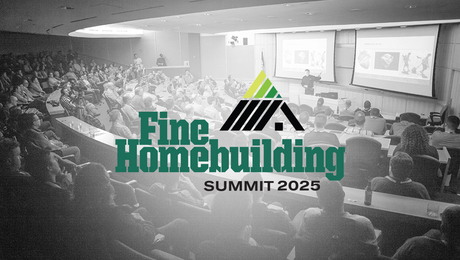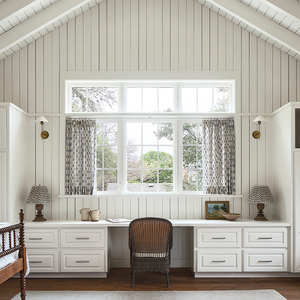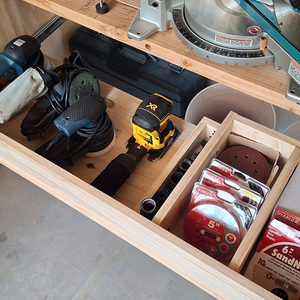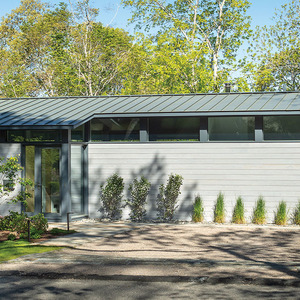NYC exposed copper pipe bracket solution

I got hired [people really are desperate to find reliable people, as I have no land based HVAC experience other than as a DIY homeowner] as a project manager by a NYC heating and A/C guy to help on a complete heating replacement in a 6 building Tribeca complex. These are million dollar loft apartments with demanding customers.
We’re installing Runtal wall mounted radiators and the return piping is exposed below the radiator. I’m trying to figure out a more precise and less time consuming process to fix the return pipe to the wall. Right now they’re drilling the brick, epoxying in a split ring tubing holder (like this, mounted horizontally). It takes a long time to install all of these, and if they’re not spot on, the pipe isn’t parallel with the radiator, and they’re not adjustable in the vertical direction, meaning you have to drill your hole right the first time.
Any suggestions? I thought about making something to hang the tubing off the radiator, but it seems like the pipe wouldn’t be solid enough.
Marine Engineer



















Replies
Are you sure you don't want to use the available pipe trim?
How long a run of exposed pipe do you have to hang? Are there any elbows in the run?
If the only hangers you have to install are inline with the inlet/outlet, I would make a template by drilling a guide hole(s) in a threaded stub. Screw it in the fitting finger tight, align the guide hole perpendicular to the wall, and drill through it.
Got pics, drawings?
SamT
I guess the return piping is usually buried in the walls, but this being a retrofit into a converted warehouse, the heating is being installed primarily on the perimeter into brick walls. The return pipe is exposed beneath the runtal unit.
View Image
We want to replace the split ring bracket with .... something that looks good, doesn't let the pipe swing, is fast to install and easy to tweak to keep the pipe parallel with the radiator.
I'll take pictures on Monday of the first apartment that has the brackets installed.
Marine Engineerfair winds and following seas
You want something like these?
http://www.curtainhardwares.com/curtain-hardware-rod/curtain-brackets.html
http://www.wagnercompanies.com/domains/wagnercompanies/files/pdf/brass_railing.pdf
http://www.wagnercompanies.com/view_or_download.aspx
View Image
http://www.wagnercompanies.com/Custom_Services_Index.aspx
Maybe they can fabricate something like this for not too much. From where I sit it looks like a ballpark of $300 setup and $2.50 each. With 12ga type K (? the stiff stuff) copper, you might not need the gussets. 'specially if you mount them 16 - 24 OC. A dab of solder to hold the pipe to the bracket and ...
View ImageSamT
something along those lines. An idea I had was like this:
View Image
There are fins on the back of the runtal units where a hook type bracket could hang. Just don't want it to be too unstable, and don't want it to look half a$$ed.
Marine Engineerfair winds and following seas
A buddy of mine has installed Runtals on a couple of high end projects around town, TriBeCa included. I'll see if I can get any info out of him and I'll let you know.
million dollar loft apartments with demanding customers.
don't want it to look half a$$ed.I understand.But... you're running bare copper in front of raw brick. So the theme seems to be industrial chic. Are these going to be painted, polished, or what? Even crude industrial saddle clamps can look good in the right setting if they're polished up nice. What about insulation? Does code call for any?Your boss should be charging up the wazoo for this work, 'cuz those demanding customers are gonna demand good looks and he should have considered that. IOW, you need to do it right.Since you are thinking of hanging from the radiators, this must be a short run. Why not strap it to the center connecting tube with some 1"-2" brass? You could use brass machine screws or stainless or black self drillers like the tin can studs take. As long as the screw layout was neat, it would look OK. You could have the outer screwholes predrilled for accuracy, then just drill through the back flap on site. Use enough screws so they make a pretty pattern.SamT
is this what you are suggesting?
View Imagefair winds and following seas
Sorry, didn't upload this.SamT
or even better, like this:
View Imagefair winds and following seas
Jon,
Why are they epoxying the threaded rod for the hangers into the wall? Snap a chalkline to line up the holes, then drill for a #8 lead molley and screw the 'top' half of the split ring right to the wall with a flat-head screw. Get brass-plated screws if you're worried about dissimilar metal reactions, but chances are the screw head won't touch the copper anyway.
Yeah, I know the brick in those Tribeca lofts is old, but there's not a lot of weight gonna be hanging on those rings.
Dinosaur
How now, Mighty Sauron, that thou art not brought
low by this? For thine evil pales before that which
foolish men call Justice....
they pretty much did that in the first apartment, but some of the holes were an 1/8" high/low and so the run of pipe was wavy or the gap between the bottom of the radiator and the pipe narrowed or widened. This first apartment is the president of the co-op board, and he's a difficult customer. Every morning he calls the heating contractor up to complain about what went on yesterday, this or that isn't perfect.I'm trying to find a solution for the rest of the apartments that's more accurate and quicker to install. As it is, I don't see that we're going to meet the deadline. That's why I was brought in, to try and speed things up, keep the job moving. The contractor has a couple of other jobs going, his phone is ringing all day long ... it's tough to be him.Marine Engineerfair winds and following seas
Okay, I know it's brick but missing a chalkline by enough to be visible on a run of ½" pipe sounds like pretty sloppy work.
Um, not sure if I'm kidding here but have you checked out industrial Velcro¯? They make some stainless-steel stuff with more than enough sheer strength. Screw a small patch of loop-tape to the wall with a molley and wrap a turn of p/s hook tape around the pipe. Infinitely adjustable to within the size of the patch you screw to the wall.
Naaaah, nevah woik....
Dinosaur
How now, Mighty Sauron, that thou art not broughtlow by this? For thine evil pales before that whichfoolish men call Justice....
Dinosaur's right. Who's doing this work? Can they be replaced?
How pretty ($$$) does the president want?
Assuming you need 100+ pipe brackets, you can get something custom made for about 10 times the cost of the split rings you're using now.
View Image
Here's one that could be machined from rod stock 1/8" larger than your piping. Thread the bell and the dowel into the base with a 32tpi pitch. Index the Bell/Base threads so that when the offset dowel hole in the Base was inline with the pipe hole in the Bell the Bell was 3/8 turn from being tight to the Base. That leaves a gap about 0.012" wide.
A 1/4 turn of the Base on the Dowel on the unit will move the unit up or down the distance of the offset. The Base will be between 1/8 and 5/8 turn from being tight, and the Base will have moved about 0.008" relative to the wall and the Bell.
I just noticed... I drew the Bell/Base threads sideways. Talk about crossed thread LOLSamT
Sam, that is down right clever.
To simplify it, use a piece of 3/8 thick round stock. Drill one hole in the center and one hole off center. Tap the center hole for the hanger.
Snap a line and insert studs. Install the hanger in the center hole, put the plate on stud. Rotate until pipe is lined up and use a locknut on the stud.
Keep in mind that if the pipe does not follow the mortar joints, it could look wrong, even though it is level.
cleaned up that sketch
View Image
this one is a bit cheaper and may actually look better in that Industrial Chic setting since it will present a strong bold face rather than the sophisticated double curve wedding band look the first would.
View ImageSamT